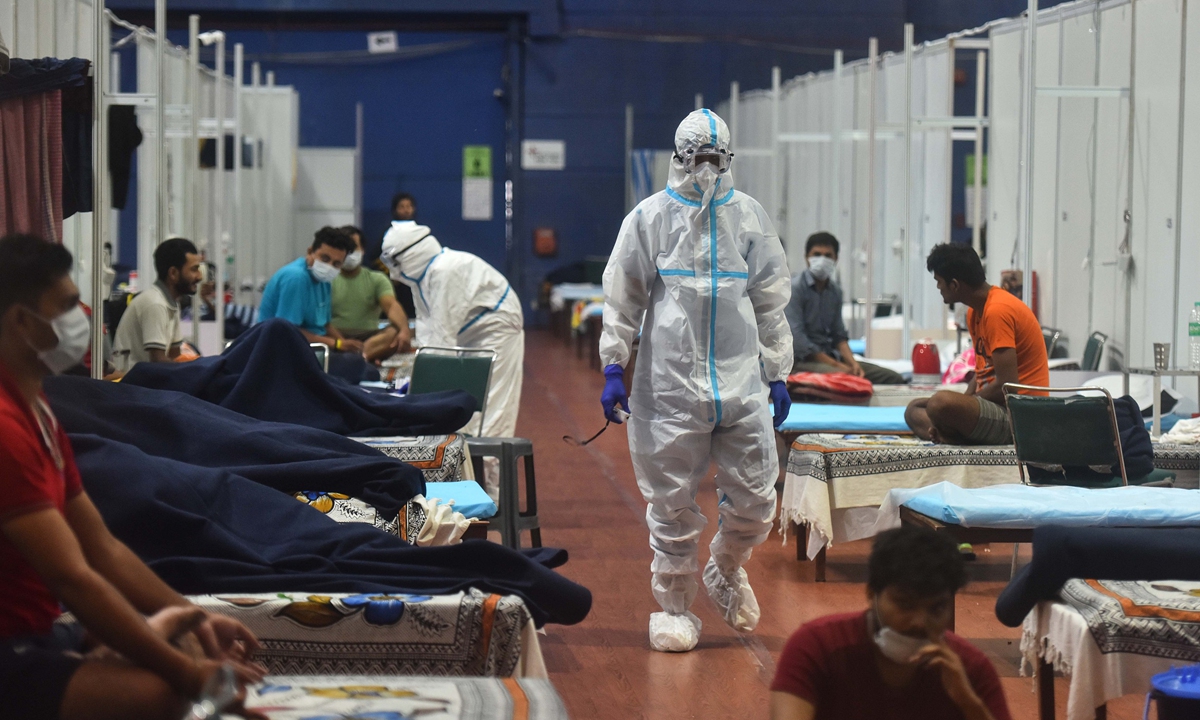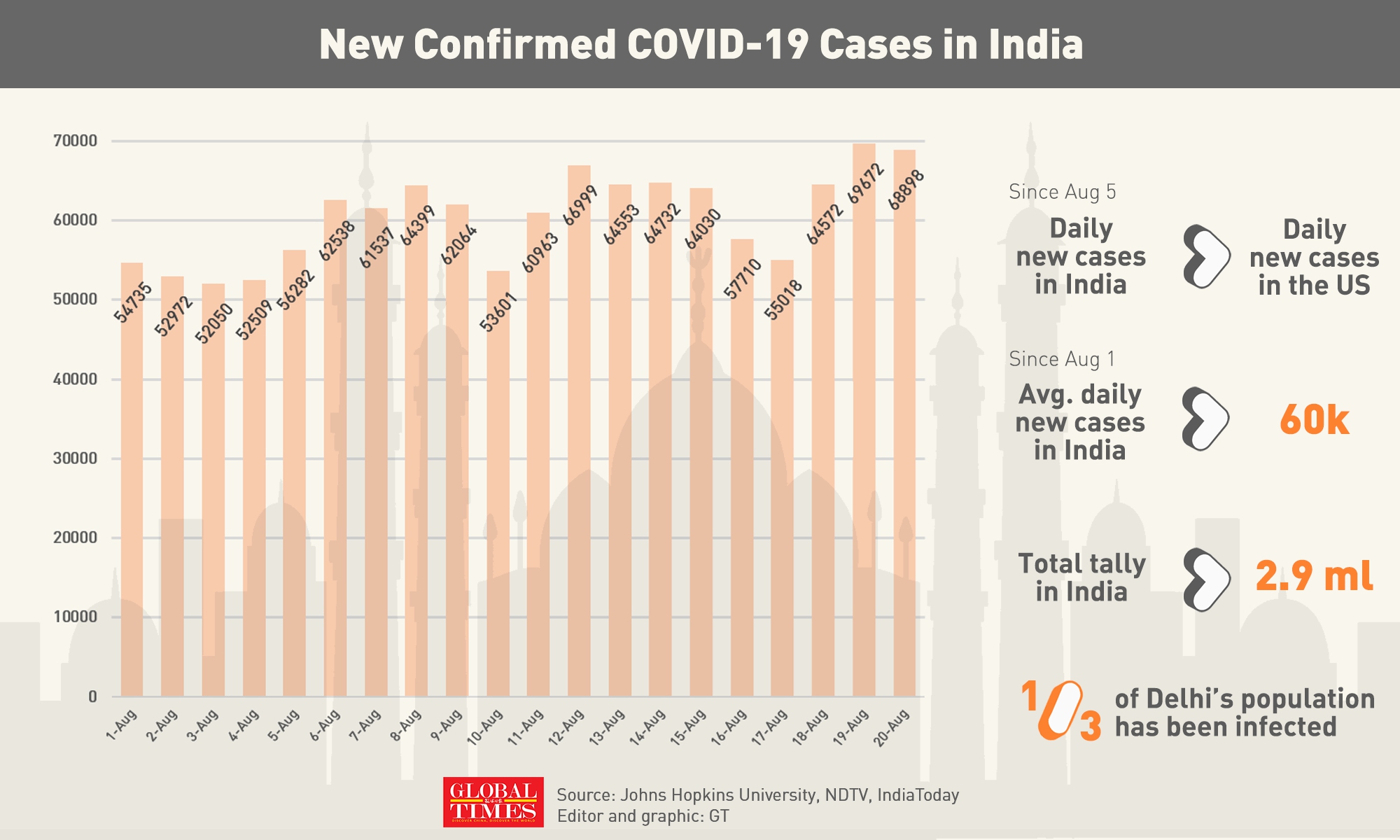India’s incapacity in dealing with COVID-19 embodied by surging daily infection number
By Hu Bofeng in New Delhi, Zhao Yusha in Beijing Source: Global Times Published: 2020/8/21 21:07:03

Photo:VCG
As a developing country with insufficient medical resources, India's incapacity in dealing with COVID-19 has been shown by its skyrocketing daily infection numbers, observers said, after the country set a fresh record for the number of infections registered in a single day, which surpassed the number of the US.
India recorded 68,898 cases of the coronavirus and 983 deaths in a single day, taking the country's tally of cases past 2.9 million, health ministry data showed on Friday, according to the Hindustan Times, noting that it was the third day in a row that the daily COVID-19 cases in the country have been more than 64,000.
Nearly 30 percent of residents in the capital New Delhi have contracted the virus, according to a seroprevalence study of more than 15,000 people conducted by the state health authorities.

Graphic: GT
The surging number of infections can partly be attributed to the country's increased testing ability, which has climbed to roughly 900,000 per day recently, local health experts told the Global Times. They said one problem with the country's testing is that it is conducted disproportionately, as it is mostly concentrated in urban areas, and people in rural areas have an urgent need to be tested.
The World Health Organization and experts have raised concerns about low testing rates in India. The country previously administered over 31 million tests, but that's only about 23,000 tests per million inhabitants — much lower proportionally than in the US, Russia and many European countries.
Compared with the virus-ravaged US and Brazil, the death rate in India, which is roughly 53,000, is relatively low. But experts continue to voice fears that India's government may be under-reporting coronavirus deaths.
Another reason may be that most people who have got the virus in India are young people, who make up a large proportion of the country's population, and are less likely to be killed by the virus than elderly people, said Zhao Gancheng, director of the Center for Asia-Pacific Studies at the Shanghai Institute for International Studies. However, the large number of infections will deal a heavy blow to India's faltering medical system, as well as its social stability, Zhao noted.
The Indian government is eager to speed up the economic recovery while dealing with the pandemic.
India has been hit by a new wave of COVID-19 cases since it gradually lifted the lockdown in May, and threats of widespread infection still linger in the country. "I don't think the infection has peaked yet, but here in New Delhi, restaurants are open and people are dining in," said Hu Feng, a Chinese person who lives in the capital.
Due to the uniqueness of India's economic development and structural adjustment, the lockdown approach to fighting the virus has exerted mounting pressure. For example, most of the cases are concentrated in cities where the tertiary industry is most vulnerable, Zhao told the Global Times.
As the lockdown shut most of the country and COVID-19 fears and infections spread, India's GDP may have shrunk more than 20% in the quarter ended June from a year earlier, some economists were quoted as saying by the Wall Street Journal.
RELATED ARTICLES:
Posted in: CENTRAL & SOUTH ASIA